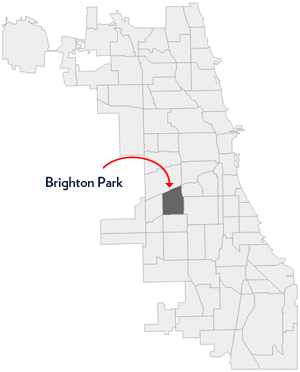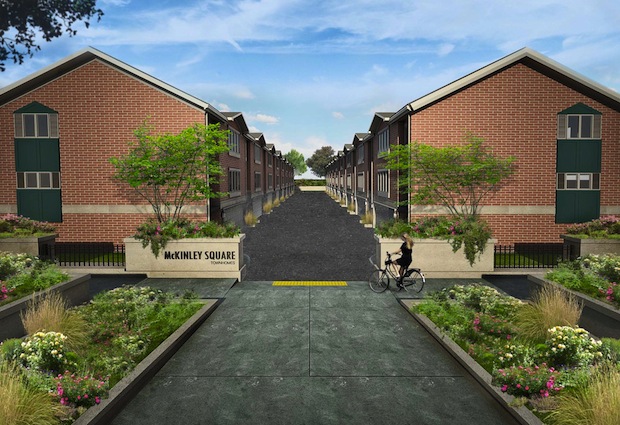There’s a gulf forming between the market for new construction homes and existing stock in Brighton Park. With a smaller housing stock than neighbors Bridgeport and McKinley Park—cottages and bungalows mostly—and large industrial areas breaking up the neighborhood, it has not been a magnet for flippers and rehabbers. “Western [Avenue] was an important dividing line when housing was being laid out way back when,” says Jameson Sotheby’s agent Wes Walker. “There’s an abrupt change in style and density when you cross it.”
Some buyers are taking notice of Brighton Park’s downtrodden housing, but the main stream of investment is bypassing existing homes for planned developments. Dozens of new town homes priced around $300,000 are headed to market this year. Alongside this, a Redfin report shows sagging sales prices in Brighton Park to start 2015 while the vast majority of neighborhoods saw prices climb over last year.

The Redfin data calls on available closed sales from the multiple listing service, including short sales and foreclosures that inevitably skew the median downward. Brighton Park has a big backlog of distressed properties. All but a few of the 13 sales below the February-April median of $103,000 were distressed, and fixer-uppers were also prevalent. Compared with the same three-month period in 2014, sales prices dropped 19.2 percent.
What’s available is selling swiftly, however. The 35 homes listed for sale in Brighton Park at the end of April had spent just 18 days on the market on average with about 25 days of supply, well under the nearly five months of supply citywide. People are snatching up property at low prices, perhaps sensing a tide of new money on its way south and west from Bridgeport and Chinatown. “With low inventory buyers have to decide if they want to pay the higher price for a dated property instead of a distressed cheaper deal,” says Imani Garrett, a broker with Beals Verdin & Co.
Walker sheds some light on Brighton Park’s real estate dichotomy: “The older properties don’t matter so much because a lot of the potential is in development of idle industrial land. It’s really an anomaly to have so much buildable land this close to a major downtown and mass transit.” Infrastructure changes are coming to Brighton Park, and this is making the residential gamble more palatable to developers. Most influential is the 6-acre Archer Station plaza rising at Archer Avenue and Pershing Road, anchored by L.A. Fitness. New residents usually beat new businesses to a developing neighborhood, says Walker, and then strain to get shops and restaurants to follow.
“Brighton Park doesn’t have the buzz of McKinley Park, but it’s also well served by transit and it’s a straight shot up Archer Avenue to Chinatown,” says Mike Hulett, a Jameson Sotheby’s agent marketing McKinley Square, a 64-unit town home development being built on vacant land near the McKinley Park border. This and nearby McKinley Gardens with 17 units sold out last year were instances of a developer, T2 Construction, picking up the pieces of failed projects. McKinley Garden’s town homes were smaller than 2,000 square feet and sold in the $230,000s; McKinley Square’s are 2,300 square feet and start at $299,900. Phase one will deliver early next year.
According to Hulett, over in Bridgeport there tends to be a premium of about $30,000 to $50,000 for new construction single-families and town houses compared to older equivalents. In Brighton Park there are few older equivalents to the under-construction homes making the price gap conspicuous. Despite this divide, there will eventually be a coming together. “I do think this market will pick up soon and will probably become a sellers market over the next five years,” says Garrett.




